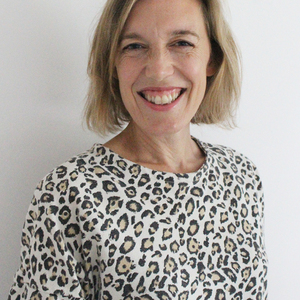Insights
INSIGHTS
All Topics
My Account
Finding freelancers: designers
29 Jul 2021by Mary Wessel
The final article in our series on finding freelancers and volunteers gives some best practice advice to charities trying to hire designers
You need to refresh your visual identity, but don’t have an in-house creative team. Or you want to create a fundraising pack, and your permanent designer is up to their ears in work. Hiring a freelancer has its pros and cons, but it’s your best bet to accessing the design expertise you need.
What kind of designer do you need for the job?
Before you start looking for a freelancer, nail down what you need them to do. Having a clear brief and specific deliverables and timings will be crucial when the project starts, but will also help you define what type of designer you need. Here are some broad descriptions, but there’s often overlap between roles.
Graphic designer
A graphic designer brings together creativity and software skills to deliver digital or print collateral. They’re who to call on when you need a leaflet, fundraising pack, website, or logo designed.
Artworker
An artworker has more of a technical role than a graphic designer, generally taking creative concepts from the designer and reworking, tidying up or retouching them (for example, colour balancing a file to make it print ready).
UI/UX designer
UX (or user experience) designers can not only make your web or app look good, but will also help design how it works to make a smooth user journey. A UI (user interface) designer focuses on all the visual parts of the user’s journey, and will consider elements such as colour schemes and buttons to make interfaces intuitive for the user.
Brand designer
Use a brand designer if you’re looking to create a new visual identity or refresh an existing one. A brand designer will be able to translate your mission and ethos into a visual identity that reflects who you are and what you’re about. The brand guidelines they create can then be used by a graphic designer to create collateral.
Animator
If you’re looking to create an animation to communicate how your charity helps its beneficiaries, you’ll need an animator. As well as creatively translating your brief, they’ll bring software skills (such as Adobe After Effects and Flash or Autodesk Maya) specific to the profession.
Find out if IR35 applies to your organisation
IR35 has been a hot potato for freelancers of late. Introduced by the UK Government in April 2021, it impacts off-payroll working. IR35 was put in place to address the issue of freelancers and contractors (often set up as personal service companies) being hired long-term and in effect working as employees, but not paying the same tax as an employee or receiving employee benefits, such as sick pay.
There are certain conditions that organisations have to meet before being affected by IR35, one being that they have more than 50 employees. So if your charity is larger or meets any of the other conditions, you’ll need to take advice from your finance and HR teams when signing up new freelancers.
Some job platforms, such as YunoJuno, include a tool to make sure you’re being IR35 compliant.
How to find the right person
Now you have a clearly defined brief and know what skills and experience you need to source, you can look for the right freelancer. Here are some common places to begin your search:
- Word-of-mouth recommendations should be your first port of call. Ask around your networks or post a request on LinkedIn
- Jobs platforms or freelance directories will match your request to a selection of freelancers. Try Blume or Work for Impact for jobs platforms which specialise in charities and not-profits or YunoJuno which specialises in expert creatives. CharityComms has a freelance directory, too, which means that you can go direct and avoid any potential fees
- Recruiters are a more expensive route, but they’ll take the recruitment process off your to do list. Agencies that focus on creatives include Major Players and Aquent, and Charity People works solely with not-for-profits
- Volunteers can bring a wealth of skills and experience for free. Read below for our tips on finding the right person
Shortlisting and quoting
Look through folios, online profiles, and reviews. Then shortlist three or four freelancers and arrange a conversation to explain what you need and get a sense of how they’ll be to work with.
If sourcing direct, you’ll also want them to quote. Giving a thorough and accurate brief will help them to quote accurately and rule out any surprises down the line.
Smaller jobs are likely to be charged by the hour or day, with longer projects having a set fee. Giving a range is usual, as with creative projects it can be difficult to know exactly how long the job will take or how many amends might be required.
Remember that the quote is only part of the selection process and the cheapest won’t necessarily deliver the best work. If you can’t afford your first choice, ask if their rates are flexible or find out what they can deliver for your budget.
How to find the right volunteers to work with
Working with volunteers is a great way of tapping into the expertise you need, but without the price tag. While this is great for your budget, it does mean you’re relying on goodwill to deliver the work you need and, for some volunteers, paid work may have to take priority over your project. Saying that, the volunteers who do choose to work with you will clearly be doing it because they want to, rather than the need to earn.
Volunteer boards can link you up to a volunteer who fits your criteria, such as Do-it, Reach Volunteering, or Volunteering Matters. You could also try the Media Trust’s volunteer board through which you can request support from expert media and creative professionals.
As well as being able to ask for help in delivering specific project (for example, for someone to design a logo or write a press release) you can also ask for someone to help train up your team or mentor your charity on a re-brand strategy.
Just as with hiring a freelancer, make sure you speak to the volunteer before booking them to make sure you’re happy to work with each other. As well as a chance to sound each other out, it’s an opportunity for you to show the volunteer that you’re a friendly, supportive and efficient organisation to work with.
When asking a volunteer to fulfil a design project, be as specific with them as you would be with a paid freelancer. Put together a clear brief that outlines what you need and by when. It will help to manage expectations for both parties, as well as showing respect for the volunteer’s time and professionalism. And make sure they have a consistent point of contact – especially if working remotely.
If you’re hoping to work with the volunteer on a longer time scale (for example, having a volunteer designer in one day a week) have a few taster sessions. The sessions will give both you and the volunteer a chance to see if the role is a good fit before committing to a longer-term relationship.
Always remember to say thank you. It doesn’t take much to show your appreciation for them volunteering their time to support you. And a little thanks goes a long way.
More on this topic
12 Mar 2025by Kalli Daffin
A guide to buying refurbished computers for your charity
27 Feb 2025by Laura Stanley
Charity Spotlight: Dr Anton Mari Lim, President, Yellow Boat of Hope Foundation
Recommended Products
Our Events
Charity Digital Academy
Our courses aim, in just three hours, to enhance soft skills and hard skills, boost your knowledge of finance and artificial intelligence, and supercharge your digital capabilities. Check out some of the incredible options by clicking here.



















